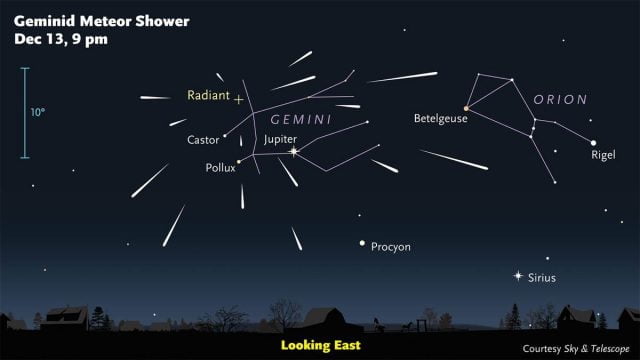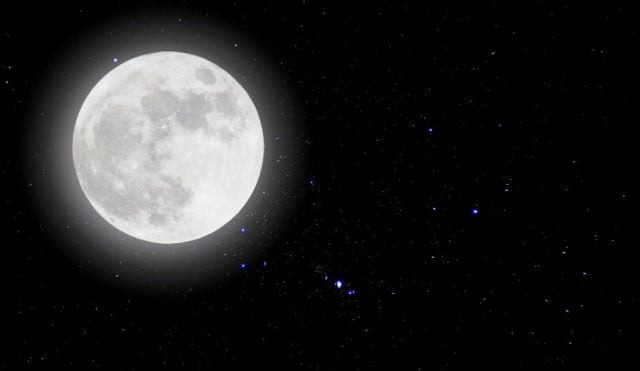Gather your family and get your lawn chairs ready tonight for the most breath-taking celestial firework display of the year – the Geminid Meteor Shower!

An astounding number of 120-160 multi-coloured meteors per hour will flash across the sky tonight! This annual phenomenon is called the “King of the Meteor Showers” for good reason and is one of the few meteor showers that can be viewed from every part of the world.
What makes the Geminids special? They burn closer to the Earth and create stunning long arches in the sky that may last for up to 2 whole seconds! They also radiate in spectacular hues of yellow, red, blue and green in addition to the usual white glow common to all meteor showers. [1]
The Geminid meteor shower seems to shoot out from the constellation Gemini, thus giving it its name. This being said, you don’t need to locate the constellation to watch the meteor shower as it will flash all across the night sky.

When to Look Out for It
The 10-day meteor shower, which began on the 7th of December, will be at its peak on 13th December from 10 pm IST onwards and will last until the early hours of the next day. With an average of up to 120 multi-coloured shooting stars per hour lighting up the sky, the Geminid Meteor Shower will be the highlight of the lunar calendar.

What’s Special This Year?
The Geminid Meteor Shower is an annual phenomenon, but with each passing year, the intensity seems to be increasing. Recent Geminids have produced an astonishing rate of 120-160 meteors per hour. Thus, it’s safe to say that this year’s celestial shower will be bigger than anything we’ve seen before.
Last year, sky gazers were disappointed as the showers coincided with the appearance of a Supermoon which overpowered the night sky and made all but the brightest meteors invisible to the eye.
According to the International Meteor Organization (IMO), observing conditions for the Geminids are “almost optimal” this year. Also, Jupiter will be closer to the moon, posing an added charm to the spectacle. [2] Owing to this, many skywatchers are eagerly hoping to make up for last year’s disappointment and behold the heavenly fiesta in all its glory.

Where You Can See It
In your own backyard! In any part of the world!
You don’t require a telescope or any other fancy equipment. Just find a nice, dark location and let your eyes adjust with the night sky for at least half an hour for optimum visibility. Keep in mind that meteors often appear in spurts, so give yourself at least an hour as viewing time. [3]
If you live in an area which is too exposed to artificial lighting, a midnight drive away from the city lights for a date with the stars will be ideal, even therapeutic.

Sources –
Image Credits – Google Images
You May Also Enjoy Reading:
http://edtimes.in/2017/12/death-growl-and-other-unusual-forms-of-singing-you-can-learn-online/
http://edtimes.in/2017/12/quoraed-if-india-was-actually-a-school-which-type-of-kid-would-each-state-be/




























